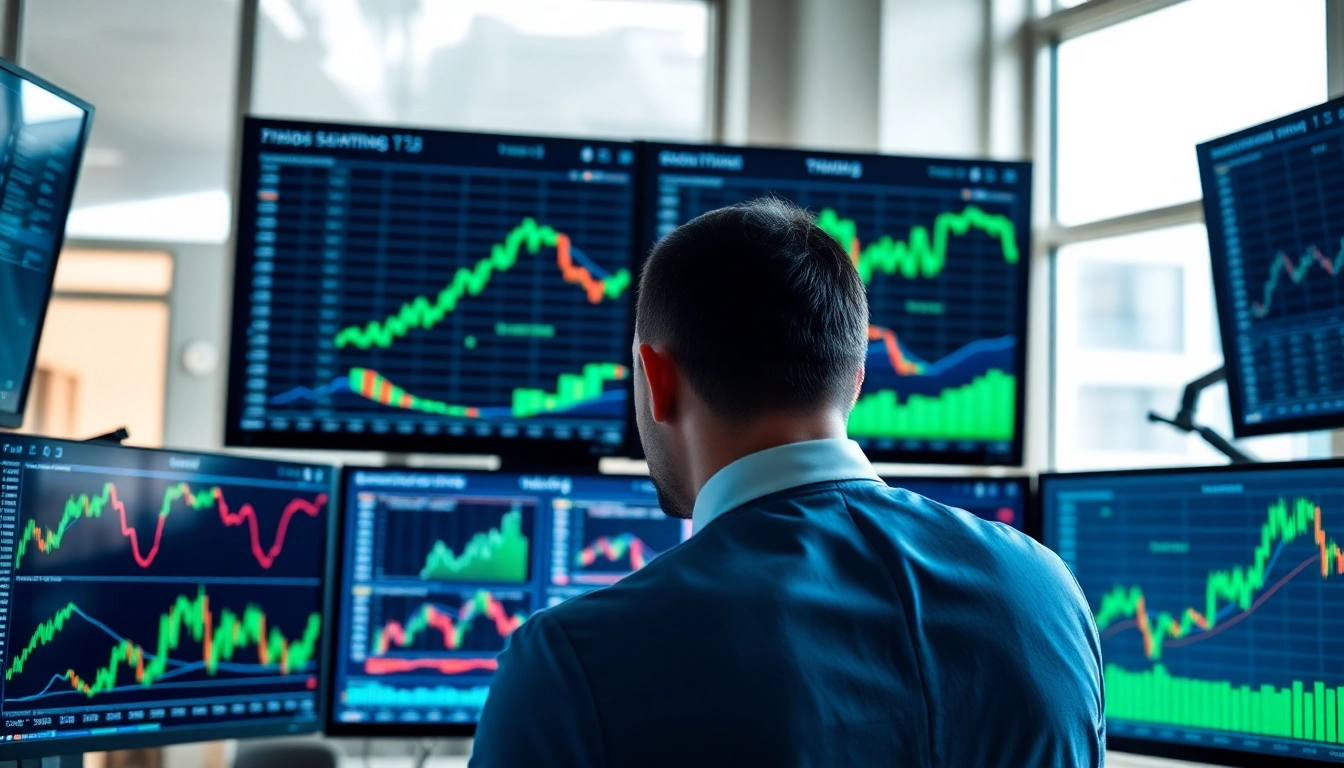
Understanding Futures: An Introduction to Trade Futures
Trade futures is a mechanism that allows traders to speculate on or hedge against future price movements in various asset classes. This intricate financial instrument is rooted in the trading of futures contracts, which serve as agreements between parties to buy or sell an asset at a predetermined price on a specified future date. The diverse applications of futures contracts span equities, commodities, and currencies, making them indispensable tools in both modern investing and risk management.
What are Futures Contracts?
A futures contract is a standardized legal agreement that obligates the buyer to purchase, and the seller to sell, a specific quantity of an asset at a predetermined price at a future date. Unlike options, which grant the buyer the right but not the obligation to purchase the underlying asset, futures contracts entail a commitment at both ends. The underlying assets can include commodities like oil, gold, and agricultural products, or financial instruments such as stock indices and currencies.
Futures contracts are traded on exchanges, ensuring transparency and liquidity. Generally, they allow traders to manage risks associated with price fluctuations, making them a key component of trading strategies in various markets.
The Role of Futures in Financial Markets
The role of futures in financial markets extends beyond mere speculation. They facilitate price discovery, allowing participants to express their expectations of future prices. By providing a mechanism for hedging against price volatility, futures contracts are vital for producers and consumers of commodities seeking to stabilize their financial positions.
Additionally, futures markets attract speculative traders, providing liquidity and helping establish market equilibrium. This interaction fosters a more efficient market where prices reflect all available information and expectations about future performance.
Key Terminology for Trade Futures
- Margin: The deposit required to open and maintain a futures position, which acts as collateral for potential losses.
- Leverage: The use of borrowed funds to increase the potential return on investment, allowing traders to control larger positions with a smaller amount of capital.
- Contract Specifications: Details including the underlying asset, contract size, tick size, and expiration date.
- Settlement: The process of closing a futures position, which can occur through physical delivery of the asset or a cash settlement.
How to Start Trading Futures
Entering the world of futures trading necessitates a structured approach. Here’s a roadmap to guide aspiring traders.
Choosing a Futures Broker
The first step to trading futures is selecting a reputable broker that offers access to the desired markets. Key considerations include trading fees, available futures products, user interface quality, and customer service. Look for brokers that provide educational resources and tools to assist novice traders in their journey.
For instance, many brokers offer demo accounts, allowing traders to practice without risking real capital. Some popular brokers include NinjaTrader, E*TRADE, and Charles Schwab, each offering unique features catering to different trader needs.
Necessary Tools and Resources
Successful futures trading is bolstered by leveraging the right tools and resources:
- Trading Platform: A robust platform enables execution of trades, monitoring of market conditions, and analysis of price movements.
- Market Research: Regularly reference market reports, news articles, and analysis from credible sources to stay informed.
- Trading Journals: Maintaining a journal aids in tracking performance, analyzing past trades, and refining strategies.
Evaluating Risks and Benefits of Trade Futures
Before diving into futures trading, it’s essential to understand both the risks and benefits involved:
- Benefits:
- Potential for high returns due to leverage.
- Diverse trading opportunities across different asset classes.
- Ability to hedge against price movements in underlying assets.
- Risks:
- High volatility can lead to significant losses.
- Margin calls may occur if the market moves against your position.
- Complexity of futures contracts necessitates a thorough understanding.
Technical Analysis for Trade Futures
One of the fundamental approaches to trading futures successfully involves the use of technical analysis. This method relies on historical price data to forecast future market movements.
Common Technical Indicators Used
Technical indicators are tools that traders utilize to gauge market sentiment and potential price movements. Some of the most common indicators include:
- Moving Averages: Simplify price data by creating a constantly updated average price. Short-term moving averages can help identify trends more quickly.
- Relative Strength Index (RSI): Measures the speed and change of price movements, indicating overbought or oversold conditions.
- Bollinger Bands: Provide insight into price volatility and potential market reversals by utilizing standard deviations from a moving average.
Chart Patterns and Trade Futures
Incorporating chart patterns can enhance the effectiveness of technical analysis. Popular patterns traders often look for include:
- Head and Shoulders: A reversal pattern signaling a change in trend direction.
- Triangles: Suggest potential breakout or breakdown points, characterized by converging trendlines.
- Flags and Pennants: Indicate short-term continuation of trends, often seen after strong price moves.
Leveraging Market Data Effectively
Utilizing market data is crucial for informed decision-making. Traders should actively analyze not just historical trends but also real-time data, including volume, order flow, and market sentiment to craft informed strategies. News cycles, economic indicators, and geopolitical events also play a pivotal role in shaping market conditions and should not be overlooked.
Advanced Trading Strategies
Once familiar with the fundamentals, traders may explore advanced strategies to enhance their performance in the futures market.
Using Leverage in Trade Futures
Leverage is a double-edged sword in futures trading. While it offers the potential for amplified gains, there is an equally substantial risk of significant losses. Traders should understand their own risk tolerance and employ leverage prudently, often leveraging lower amounts for increased flexibility and safety.
Hedging Techniques for Risk Management
Hedging involves taking a position in the futures market to offset potential losses in an existing investment. Common hedging techniques include:
- Long Hedge: Involves buying futures contracts to protect against rising prices. Typically employed by producers wanting to lock in prices for their commodities.
- Short Hedge: Traders sell futures contracts to hedge against falling prices, protecting profits on existing long positions.
Hedging strategies require careful planning and execution but can significantly mitigate risk when correctly applied.
Understanding Market Sentiment in Trade Futures
Being attuned to market sentiment is paramount when trading futures. Traders can utilize various methods to gauge sentiment, including:
- Surveys and polls: Gathering data on trader sentiment can provide insights into collective market expectations.
- Sentiment indicators: Tools like the Commitment of Traders (COT) report reveal the positioning of large traders in the market and can highlight bullish or bearish sentiment shifts.
Understanding market sentiment can be a game-changer, informing traders when to enter or exit positions in alignment with prevailing market psychology.
Performance Metrics and Continuous Improvement
Assessing one’s performance in futures trading is crucial for ongoing success and improvement. By leveraging various metrics, traders can make informed decisions moving forward.
Tracking Your Trade Futures Success
Maintaining a performance log enables traders to quantify their success through various metrics. Common metrics include:
- Win Rate: The percentage of profitable trades relative to total trades.
- Risk-Reward Ratio: A comparison between the potential profit of a trade and the risk taken, helping inform risk management strategies.
- Drawdown: A measure of the decline in account balance from a peak to a trough, vital for understanding risk exposure.
Adjusting Strategies Based on Market Trends
Markets are dynamic, and strategies should repeatedly adapt to shifting conditions. Regularly reviewing past trades and adjusting strategies based on evident trends can enhance performance. This iterative approach allows traders to realize what works, what doesn’t, and evolve their methods over time.
The Importance of Education and Adaptability
No trader can afford to become complacent. Continuous education—whether through workshops, online courses, or staying current with market news—is essential for success in the evolving environment of futures trading. Emphasizing adaptability fosters resilience, enabling traders to pivot strategies in response to new information or unexpected market conditions.
In conclusion, trading futures represents a robust opportunity for both speculative and risk management objectives. With a firm grasp of the fundamental concepts, an understanding of technical analysis, and an ability to continuously adapt, traders can successfully navigate the complexities of futures markets. For those looking to engage in trade futures, commitment, knowledge, and strategic planning are essential tools for success.







